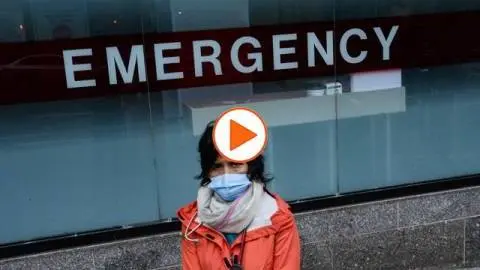When will the lockdown really end?
Some countries in Europe may try to end lockdown measures at the end of April. But those currently suffering large-scale infections won't be in a position to ease back restrictions on travel and movement until the end of May/June (or later for the US). And a true return to 'normality' probably won't come until the end of the year
Pre-conditions for an end to the lockdown
In some countries which have not yet seen the peak in infections, there have been calls for a quick exit from the lockdown measures. The social and economic costs of the lockdown have been deemed by some as too severe to justify the strict social distancing measures. Also, as the weather improves and the Easter break arrives, it will be harder to keep people at home. Supporters of this view also cite the potential adverse impact on mental health from an indefinite lockdown period. This balancing act, between containing the virus outbreak and limiting the social-economic costs, will become more complicated and steer the debate about how and when to exit the lockdown.
Earlier this week, the Danish government was the first government in Europe to announce a possible end to the lockdown measures after Easter.
In general, before any government removes emergency measures, we would anticipate seeing the following criteria:
- New case numbers falling for a sustained period (say 14 days).
- Health services are able to deal with cases that require hospitalisation without recourse to emergency measures – field hospitals, military support etc.
- In a position to fully test potential cases, trace and test their contacts, and monitor them.
A movement to a less restricted environment is likely to be a gradual process but could enable a phased move back to work for some businesses and a relaxation of social distancing measures. For bigger countries, this could be phased in regionally.
A difficult balancing act
In much the same way that countries around the world responded gradually to the Covid-19 outbreak and with a view to their own national circumstances, it is reasonable to expect that most countries will emerge from the emergency measures they have imposed at a time and a speed that is determined primarily by what is happening in their own countries, rather than what is happening at a global level.
But we can make some general assumptions:
- First in, first out: The countries that were first exposed to Covid-19 are also the furthest along the pandemic curve, and will be the first to be able to remove restrictions on travel and individual movement. We are already beginning to see this in China. South Korea may follow. In time, some of Europe’s current hotspots could see an infection peak before countries such as the US.
- Second-wave: A second wave is always possible as restrictions are relaxed, and if imported cases are not prevented by maintaining stringent immigration controls.
- The global view is important: Where countries have limited the spread of the infection with tight testing, tracing and isolating policies, along the lines recommended by the WHO (Singapore, Hong Kong), restrictions may need to remain in place longer, until either the global situation is less threatening, or effective treatment has been developed. Until then, they remain islands of potential infection.
A difficult balancing act between the desire to restrain the virus with a need to restart the economy may almost inevitably lead to some restrictions being eased prematurely. Seasonality of the virus, if this turns out to be a feature, may also encourage premature easing and second waves of infection before a sustainable easing of restrictions is possible.
Where countries see new cases begin to rise again or see a rise in non-traceable cases, they will have to re-implement restrictions. Such reversals could spur a social backlash and pushback against restrictions, which may start to be ignored and lose their effectiveness.
When will it really end?
The return to something that resembles genuine 'normality', at which point we could reasonably say the pandemic is over, will probably not take place until:
- Such a large proportion of the population has been infected with the virus that herd immunity exists (80%+).
- An effective vaccine has been established (consensus view is a 12-month horizon).
- Effective treatment for the conditions caused by the infection has been established.
None of the three conditions above can be taken for granted. There is no vaccine to the common cold - another coronavirus. And immunity on the basis of prior infection may not be total, or long-lasting (as with the common cold), so herd immunity may not be a feasible or realistic goal.
There are few specific effective treatments for respiratory infections, and the best hope for treatment may rest with the family of antivirals such as Remdesivir. Trials are underway. Production and licensing issues may slow take up and use.
In short, in our base case scenario, social and economic pressure will be at such high levels that some European countries will try to ease some of the lockdown measures at the end of April. It may not be until May/June before countries now suffering large-scale infections in Europe (later for the US) are in a position to ease back their restrictions on travel and movement.
It may take until the end of the year or the New Year before countries are operating closer to 'normality'.
Download
Download article
6 April 2020
Covid-19: A virus-driven ice age This bundle contains 10 articlesThis publication has been prepared by ING solely for information purposes irrespective of a particular user's means, financial situation or investment objectives. The information does not constitute investment recommendation, and nor is it investment, legal or tax advice or an offer or solicitation to purchase or sell any financial instrument. Read more


